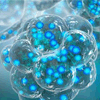|
下一代癌症类器官
患者特异性肿瘤的器官型模型正在彻底改变我们对癌症异质性及其对个性化医学的影响的理解。这些进步在一定程度上归因于类器官模型在体外稳定保存母体肿瘤的遗传、蛋白质组学、形态学和药物型特征的能力,同时还提供了前所未有的基因组和环境操作。尽管最近在类器官方案方面进行了创新,但由于一些非标准化方面,包括癌症组织来源和随后的加工、培养基配方和动物衍生的三维基质,

癌症类器官培养的当前技术本质上是不可控制和不可复制的。考虑到癌症类器官准确再现与患者特异性癌症相关的瘤内和瘤间生物异质性的潜力,消除伴随癌症类器官培养的不良技术变异对于建立可复制的平台来加速对患者护理的可翻译见解是必要的。在这里,我们描述了下一代癌症类器官系统标准化的当前挑战、最新的多学科进展和机遇。

癌症的异质性通常被认为是开发有效的、针对患者的治疗方法的最主要障碍。具体而言,患者通常表现出不同的肿瘤表型,这些表型在疾病进展和临床治疗过程中动态演变。这种在患者癌症内部和之间的极端异质性通常解释了广泛的患者治疗反应,包括内在和后天的治疗耐药性。此外,它加剧了设计针对广泛患者群体的成功临床试验的难度,因为特定的治疗机制可能对不同起源和表型的肿瘤无效。因此,个性化癌症治疗的成功进展将取决于我们系统定义和建模癌症异质性的能力。癌症异质性可分为两大类:肿瘤内和肿瘤间。虽然肿瘤内异质性是由特定患者癌症(包括原发性肿瘤和转移性人群)内的时空细胞和细胞外多样性定义的,但肿瘤间异质性描述了具有相同癌症亚型的患者之间的人群水平变化。由于过去几十年的进步,几种组学方法——主要是大细胞和单细胞DNA/RNA测序——在患者组织样本中的应用表明,肿瘤中的基因组和转录组学不稳定性可以支持癌症动态选择、庇护和扩增表型不同的肿瘤克隆亚群的能力,导致整个癌症细胞的异质性。最近,几种多学科技术的合作使用突出表明,基因上不同的肿瘤内亚群可以表现出不同的细胞表型、转录组学特征、表观遗传特征、代谢率和形态学特征,这些特征直接影响癌症的进展、转移和治疗反应。

癌症生物学的突破始终是由研究和模拟癌症的新方法驱动的:从Henrietta Lacks的子宫颈肿瘤建立第一个人类癌症细胞培养物,重新定义了我们在体外研究患者肿瘤样本的能力,最近可获得的单细胞测序技术为恶性肿瘤的细胞组成和表型提供了前所未有的分辨率和公正的见解。随着使用类器官模型对患者特异性肿瘤进行建模的创新,我们再次重新定义了对癌症亚型生物异质性的理解。虽然这些进步加速了我们提出关于癌症异质性的全新问题的能力,但成功回答这些问题并将我们的发现转化为治疗性临床治疗取决于我们在癌症患者群体中完善和可重复应用这些技术的能力。值得注意的是,每种癌症模型在重现患者特异性肿瘤方面都表现出内在的局限性,选择合适的模型是每项研究成功的基础。重要的是,随着我们继续对癌症的基本驱动因素和治疗方法有更全面的了解,我们改进和标准化这些模型的能力变得越来越重要。在这篇综述中,我们强调了下一代癌症类器官培养标准化的新方法,并对使用类器官可重复和准确地建模肿瘤异质性的下一步进行了展望。未来实施这些技术来改善癌症类器官培养将需要临床医生、生物学家和工程师的跨学科努力。总体而言,我们在构建强大的癌症模型方面的集体成功将重塑我们处理个性化护理的方式,并加速临床有效治疗的转化,从而大大改善患者的预后。

Organotypic models of patient-specific tumours are revolutionizing our understanding of cancer heterogeneity and its implications for personalized medicine. These advancements are, in part, attributed to the ability of organoid models to stably preserve genetic, proteomic, morphological and pharmacotypic features of the parent tumour in vitro, while also offering unprecedented genomic and environmental manipulation. Despite recent innovations in organoid protocols, current techniques for cancer organoid culture are inherently uncontrolled and irreproducible, owing to several non-standardized facets including cancer tissue sources and subsequent processing, medium formulations, and animal-derived three-dimensional matrices. Given the potential for cancer organoids to accurately recapitulate the intra- and intertumoral biological heterogeneity associated with patient-specific cancers, eliminating the undesirable technical variability accompanying cancer organoid culture is necessary to establish reproducible platforms that accelerate translatable insights into patient care. Here we describe the current challenges and recent multidisciplinary advancements and opportunities for standardizing next-generation cancer organoid systems.

Heterogeneity in cancer is often regarded as the most substantial roadblock in the development of effective, patient-specific therapies. Specifically, patients often present diverse tumour phenotypes that dynamically evolve throughout disease progression and clinical treatment. This extreme heterogeneity within and across patient cancers often explains widespread patient therapeutic responses, including intrinsic and acquired therapeutic resistance. Additionally, it exacerbates the difficulty of designing successful clinical trials that target broad patient populations, as specific therapeutic mechanisms may not be effective against tumours with varying origins and phenotypes. Therefore, successful advancement of personalized cancer therapies will depend on our ability to systematically define and model cancer heterogeneity. Cancer heterogeneity can be subdivided into two overarching categories: intra- and intertumoral. While intra tumoral heterogeneity is defined by spatiotemporal cellular and extracellular diversity within a given patient’s cancer, including both primary tumour and metastatic populations, intertumoral heterogeneity describes population-level variations between patients with the same cancer subtypes. Due to advancements over the last decades, the application of several omics methods—primarily bulk and single-cell DNA/RNA sequencing—to patient tissue samples has revealed that genomic and transcriptomic instability in tumours can support cancer’s ability to dynamically select, harbour and amplify subpopulations of phenotypically distinct neoplastic clones, leading to overall cancer cell heterogeneity. Recently, the cooperative use of several multidisciplinary techniques has highlighted that genetically divergent intra tumoral subpopulations can exhibit distinct cellular phenotypes, transcriptomic profiles, epigenetic signatures, metabolic rates and morphological features that directly influence cancer progression, metastasis and therapeutic response.
Breakthroughs in cancer biology are consistently driven by novel approaches to studying and modelling cancer: from the establishment of the first human cancer cell culture from the cervical tumour of Henrietta Lacks that redefined our ability to study patient tumour samples in vitro, to the recent accessibility of single-cell sequencing technologies that are providing unprecedented resolution and unbiased insight into the cellular makeup and phenotypes of malignancy. With innovations in modelling patient-specific tumours using organoid models, we are yet again redefining our understanding of biological heterogeneity across cancer subtypes. While these advancements have accelerated our ability to ask fundamentally new questions about cancer heterogeneity, successfully answering these questions and translating our findings into curative clinical treatments hinges on our ability to refine and reproducibly apply these technologies across cancer patient populations. It should be noted that every cancer model exhibits intrinsic limitations for recapitulating patient-specific tumours, and selection of the appropriate model is fundamental to each study’s success. Importantly, as we continue to develop a more complete understanding of the fundamental drivers and treatments of cancer, our ability to improve upon and standardize these models is of increasing importance. In this Review, we have highlighted novel approaches for standardization of next-generation cancer organoid culture and offered our outlook on the next steps for reproducibly and accurately modelling tumour heterogeneity using organoids. Future implementation of these techniques to improve cancer organoid culture will require interdisciplinary effort from clinicians, biologists and engineers. Overall, our collective success in engineering robust cancer models will reshape the way we approach personalized care and accelerate the translation of clinically effective treatments that greatly improve patient outcomes. |

